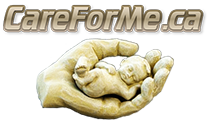Cognitive Behavioral Therapy (CBT)
Personalization and blame
Personalization is when you hold yourself responsible for an event that is not under your control. Instead of trying to discover the cause of the problem, the person will be mired in feelings of guilt, shame and inadequacy. Blame is the complete opposite and occurs when a person holds some outside influence as being the cause of their problems, again overlooking what may be the actual cause of the problem.1
So now what?
Okay so now we have a better understanding of some of the ways in which our thoughts might be distorted and the effect it can have on our mood. So what do we do now? You must try to become aware of when these distortion occur in your life. This is the first step - awareness. The next time you find yourself experiencing some sort of negative emotion or situation in your life - stop! Write it down. What kinds of thoughts are you having at the time? On a scale of 1-10 rate how high the negative thought distresses you. Next try to go through the list of the 10 cognitive distortions and see if any of them apply to what you are thinking. Once you have identified the distortion, it is time to really think about how you may more correctly think about the situation. For every negative distorted thought that you have take the time to come up with a counter statement that is more realistic. Be positive and thorough. Even if you don't really believe it at the time. Rate now on a scale of 1-10 how you feel after performing the cognitive correction. Is there any improvement in how you feel? Sometimes the effect can be immediate but if it is not, don't worry. It may take some time of doing this to truly feel the effects. The more you practice this, the more you will be able to perform the exercise automatically, disarming negative thoughts before they have a chance to affect your mood. You may wish to start up a cognitive behavioural journal to keep track of your progress. I cannot recommend enough picking up a copy of Feeling Good by David D. Burns MD. This important book will take you through a myriad of different exercises and techniques to help you overcome any feelings of depression, anxiety or low self esteem.
Resources and Citations
1 Burns, David D. MD.The Feeling Good Handbook.Harmondsworth, Middlesex, England, 1989. PrintPage 1 2 3
Start
Cognitive Behavioral Therapy
Please Like & Share this article Now! Takes like Two Seconds. Thank You!
Addthis Sharing network below.
To top of page
